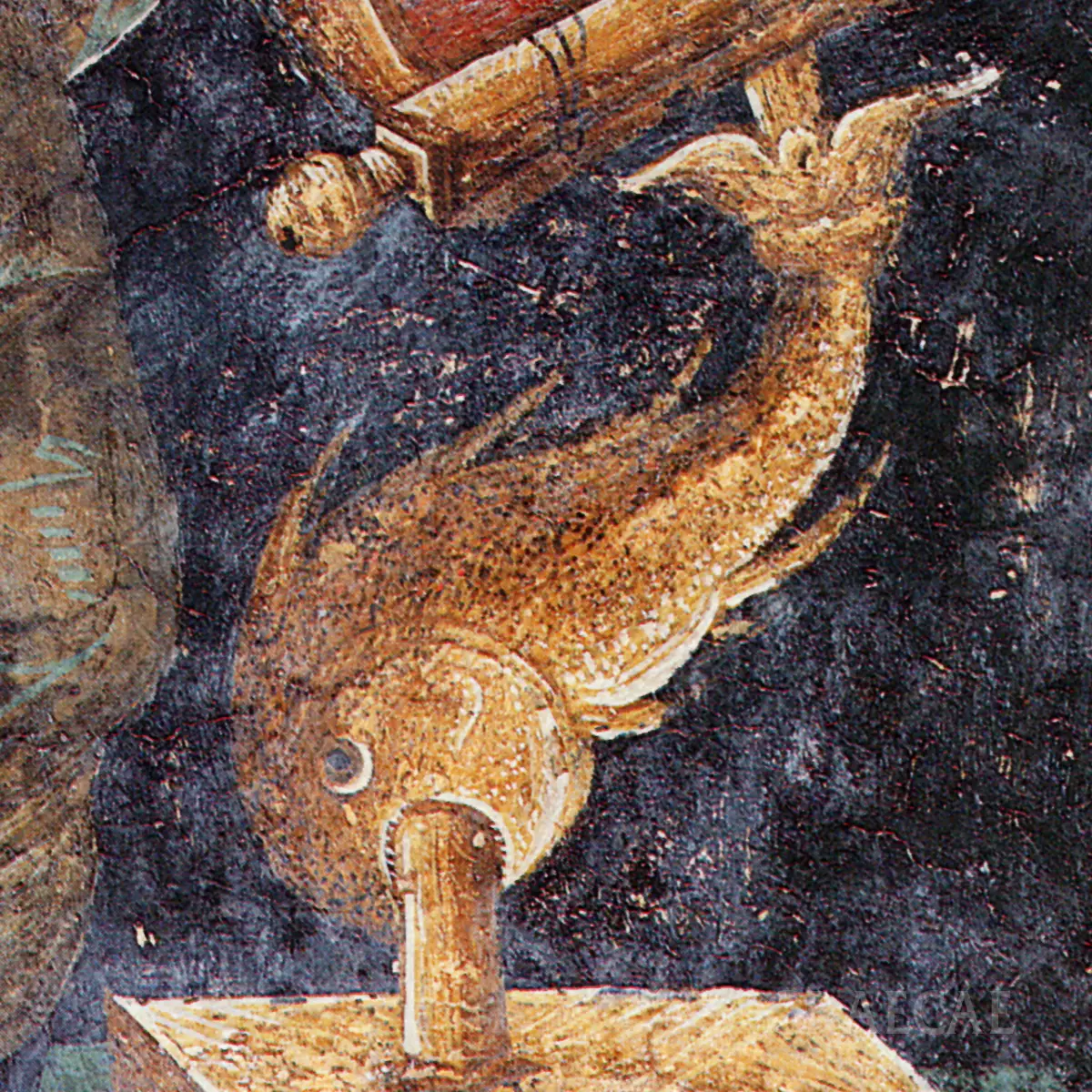
The gaze, almost. There we always conclude, when we try to understand the Byzantines – unto the gaze. And here, in the narthex of the Metropolis of Mystras, a castle-city of the Peloponnese, we meet a gaze of an angel turned towards the above, towards the Judge, perhaps, or perhaps into the void, absorbed in his work. We speak about a wall-painting, a fresco upon the wall, dating around the end of the 13th or the beginnings of the 14th century, probably between 1291 and 1315. These works were done under the aegis of the then metropolitan Nikephoros Moschopoulos. The artist remains unknown, as usual – an artisan, not a «celebrity» according to us.
What do we see? An angelic form, bearing wings and a bright halo (nimbus), seated before a large, elaborate lectern. This creature, the angel, holds open a book. It is not about just any book; it is, according to the theological interpretation of the scene – of the Second Coming – the Book of Life, about which the Revelation of John speaks (20:12). In it are recorded the deeds of men. This angel is not a warrior, nor simply a messenger; he is a scribe, a reader of existence. His stance is delicate indeed but also full of intensity, the one wing raised as in a moment of sudden movement or spiritual wakefulness, a detail which gives rhythm to the whole composition.
The form of the Angel and the Palaiologian Art
Examining this form, this late-Byzantine rendering, we move away from the austere hieraticism of older eras. The Palaiologian period, to which the work belongs, introduced a new feeling; perhaps not exactly «realism», but a liveliness, a sense of volume and of movement that previously sometimes was lacking. The modelling of the face, the gradations of the colours, even if worn by time, reveal an attempt at rendering the flesh, of the bones beneath the skin.

The Book as Object
The central element, for me at least, is the book. It is not simply a symbol. The artist gave emphasis to its materiality; the lectern is heavy, wooden, perhaps gold-adorned. This book is a codex (codex), not a scroll, and it is open to a double page, full of writing. This writing, although hard-to-read, denotes the recording. In the Second Coming, the judgement does not happen only orally; it is based upon documents. There exists a bureaucracy of salvation and of perdition, an idea which fascinates the student of manuscripts. This angel is the guardian of the archive.
The rarity of the Representation
The placement of this angel here, in the narthex – the antechamber of the main church – is strategic. The faithful one entering beholds the reminder of the Judgement. The representation of angels reading the books was not so common as other scenes of the Second Coming. We find parallels, of course, as in the Monastery of Chora in Constantinople, but there the angels wear royal garments and stand near to Christ. In Mystras, the angel is more isolated in his work, a form of concentration. The art here does not simply narrate; it creates an environment of theological thought about personal responsibility.

